London, England
Whether you arrive in London via the underground or inside one of the city's ubiquitous black taxicabs, you will immediately be greeted by a deep sense of history and met with the unique vibrancy of this incredible destination.
In its dark and troubled past, the city of London has survived Roman occupancy, sackings from the Celts, Romans, Vikings and Saxons, a Norman invasion, two great fires, the bubonic plague, Nazi bombings, the Spice Girls and Damien Hirst.
But the London of today promises something for everyone. The London Eye lifts visitors high above the river into vistas that stretch tight across the fading skies. Further down on the South Bank, the Tate Modern contains one of the world's most incredible collections of Modern Art, while the city's 30,000 stores and boutiques will exhaust even the most avid shopper, and its 6,000 restaurants are only too eager to demonstrate why Britons revere their chefs as celebrities.
For those interested in exploring the country's heritage, the Tower of London is an excellent starting point. First constructed in the 11th century, the Tower has been rebuilt several times as later monarchs have left their mark. Still one of London's biggest attractions, and a great celebration of pomp that is free to all visitors is the Changing of the Guard at Buckingham Palace, which happens daily.
As the great dome of St Paul's reflects the colours of the setting sun, London comes alive with an unrivalled nightlife. For those up for something more thrilling than dinner and the theatre, London has a vast number of bars and nightclubs catering to all tastes.
Attractions and Excursions
Madame Tussauds
Madame Tussauds is the most famous wax museum gallery in the world, with more than 400 life-sized models of stars, famous politicians, royals and sportsmen, as well as the most infamous criminals the world has known. Inside the Museum the 'Spirit of London' ride will take you through the city's history, introducing you to those figures that have shaped the London of today, while The Chamber of Horrors challenges visitors to enter and be terrified. Also at the site is Tussaud's Auditorium, one of the biggest in the world, ready to amaze visitors with its views of the universe.
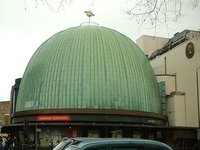
Tower of London
The Tower of London is perhaps as famous for its traditions as its imposing structure. It is guarded by a special band of Yeoman Warders, known as Beefeaters, and dotted with several large, black birds - the Ravens. Legend has it that if the Ravens ever leave the Tower, a great tragedy will befall England, and to this day the birds are protected by Royal decree. The Tower's history dates back to the 11th century, and each new Monarch has played a role in its growth and development. It also houses Britain's crown jewels, a spectacular display of some of the world's finest gems and workmanship. The Tower is next to Tower Bridge, another famous London Landmark.
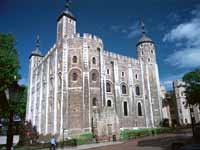
Houses of Parliament
Originally built for Edward the Confessor more than 1,000 years ago, the Houses of Parliament, or Palace of Westminster, remained the principal residence of Britain's monarchs for the next 400 years. Thereafter it became the administrative centre of the country. In 1834 the great fire burnt everything except Westminster Hall, and the present Gothic building was completed in the 1840s. It is perhaps most famous for the clock tower, St Stephens, which is commonly, but mistakenly called Big Ben, after the name of the bell inside. Although Parliament is closed to visitors during session, it is still a popular attraction to tourists for its exterior architecture.
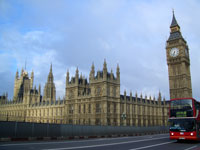
National Gallery
The National Gallery has an imposing and regal façade stretching across the northern side of Trafalgar Square, and houses over 2,000 paintings from every major European school of painting from the 13th to the 19th century. It was opened in 1938 at its present location, which was chosen for its situation between London's wealthier West End and poorer East End, as a 'gallery for all'.
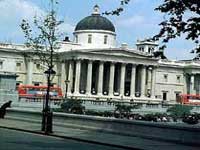
British Museum
With more than 6,000 historical objects from all around the globe, the British Museum houses one of the world's greatest collections of antiquities, including the Parthenon Frieze or Elgin Marbles, the Rosetta Stone and the Roman Portland Vase dating from the 1st century AD. In 2000 the great court was reopened with an incredible glass roof covering two acres, and stairwells leading down to the Reading Room, which has been completely restored.
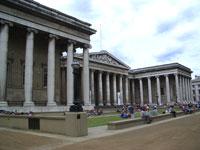
London Eye
At 443ft (135m) tall, and weighing more than 250 double-decker buses, the London Eye is the most spectacular new addition to London's skyline. With incredible views of most of London's major attractions, and an opportunity to put the city's geography into perspective, it is a must see for all visitors. Originally conceived by architects David Marks and Julia Barfield as an entry for a millennium landmark competition, the project took six years and the expertise of hundreds of people from five European countries to turn it into a reality.
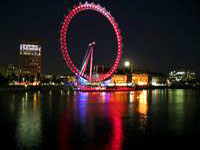
Shakespeare's Globe
Situated on the bank of the Thames, just 656ft (200m) from the site of Shakespeare's original Globe theatre, this fantastic recreation will transport visitors back to the time of the very first productions of Hamlet, Romeo and Juliet and Twelfth Night. The reconstruction took a total of 10 years to complete; at a cost of over £40 million and now houses a professional theatre company responsible for regular productions of Shakespeare's famous plays. Adjacent to the theatre is the Globe Exhibition, presenting graphic information about the reconstruction of the theatre and bringing to the fore the life and works of Shakespeare with interactive displays and live demonstrations. Visits to the exhibition include a tour of the theatre.
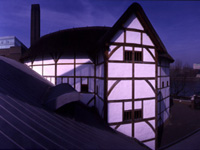
Buckingham Palace and the Queen's Gallery
No visit to London would be complete without experiencing the pomp and ceremony of the changing of the guard at Buckingham Palace, but now visitors can actually get a peek inside during the annual summer opening of the State Rooms, and see some of the Queen's private art collection at the newly opened Queen's Gallery. Originally the town house of the Dukes of Buckingham, Buckingham Palace has served as the official London home of Britain's monarchs since 1837. Look to see whether the Royal Standard (not the Union Flag) is flying, which indicates that the Queen is in residence.
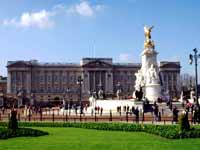
Harrods
Harrod's, which proprietor Mohamed Al Fayed calls his 'Palace in Knightsbridge', promises one of the most extravagant and luxurious shopping experiences in the world. With 22 restaurants, and a wide range of departments and services across its seven floors, it is easy to see why this is the shopping choice of London's social elite. With its prominent position on Brompton Road, Harrod's is hard to miss, especially at night, when the entire façade is illuminated with a grand total of 11,500 light bulbs.
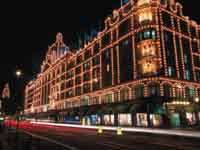
Greenwich
This is the home of the Greenwich Meridian, which splits the globe into East and West and is responsible for setting the world clock on zero degrees latitude. Greenwich has a host of attractions including Greenwich Market with its variety of arts, crafts, food and bric-a-brac, Sir Christopher Wren's Royal Observatory and the National Maritime Museum. Greenwich Park is beautifully landscaped and is ideal for a picnic lunch. The famous tea-clipper, the Cutty Sark, was damaged by a fire in May 2007 and has been closed to the public.
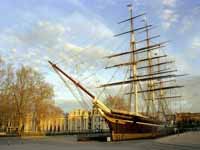
London Dungeon
Take a trip through London's dark and gruesome history, meet Jack the Ripper and see what became of his victims, or see the chaos and destruction caused by the great fire of London. The London Dungeon brings history's most notorious killers and evildoers back to life in an experience definitely not for the faint-hearted. Beware: some of the exhibitions have a nasty way of coming alive and jumping out at the unsuspecting visitor.
St Paul's Cathedral
The great dome of St Paul's Cathedral has been a distinctive landmark on the London skyline for centuries. Built in 1673 by Sir Christopher Wren, after the previous St Paul's was burnt to the ground during the Great Fire of London, it is the greatest of several cathedrals dedicated to St Paul that have occupied the site for more than 1,400 years. The crypt at St Paul's is one of the largest in Europe, and it houses more than 200 tombs, including those of Admiral Nelson, the Duke of Wellington and Wren himself. The Cathedral has hosted many significant ceremonies in London's history, including the funeral of Sir Winston Churchill, the marriage of Prince Charles and Lady Diana and most recently the Queen's Golden Jubilee.
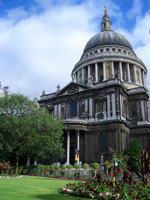
Piccadilly Circus
One of London's best known, but most overrated sights, Picadilly Circus is at the junction of Picadilly, Regent Street and Shaftesbury Avenue and is surrounded by neon advertising and fast-food restaurants. However with its Tube station, Picadilly Circus is a good starting point for shopping in the West End, being near to Jermyn Street, Saville Row and Bond Street. London's Theatreland is centred on Shaftsbury Avenue and Soho and China Town are also within easy walking distance.
Transport: Piccadilly Circus underground station.
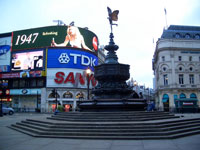
Canterbury
The historical cathedral city of Canterbury, with its narrow streets and walkways, is best explored on foot. It is the home of Christianity in England, and has been the ultimate destination for pilgrimages in England for centuries, as described in Chaucer's Canterbury Tales. The famous Canterbury Cathedral is one of the most impressive and evocative in England, it was here of course that Thomas à Becket was martyred in 1170. Visitors can explore the ruins of the original abbey of St Augustine, who brought Christianity to England more than 1,400 years ago, or visit the Canterbury Tales Pageant and meet some of Chaucer's famous characters. For an insight into the cities of medieval England climb the original West Gate Tower, which is still intact, for breathtaking views across the city.
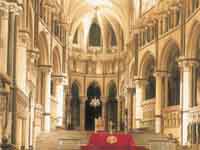
Leeds Castle
Set atop a lake in a picturesque valley in Kent, with imposing battlements and a 500-hectare Tudor garden, Leeds Castle has been described as 'the most beautiful castle in all the world'. Once a residence of British Queens and a playground for King Henry VIII, it has been open to the public for 25 years, revealing the majesty of a bygone age. With so much to explore, Leeds Castle requires a full day for visitors to tour the castle, get lost in the maze and picnic in the gardens or dine in one of the restaurants and tea rooms.
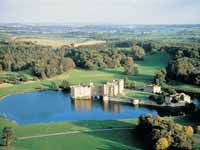
Windsor
The charming town of Windsor sits on the River Thames, 20 miles (32km) west of London, and is dominated by the magnificent Windsor Castle, the world's largest and oldest occupied castle. The castle was built by William the Conqueror almost a thousand years ago and has been lived in by English monarchs ever since; although Buckingham Palace is the Queen's best known residence, Windsor is her favourite and is where the Royal Family spend their weekends. Highlights in the castle include the wonderful State Apartments, and the Waterloo Chamber, built to commemorate the British victory over Napoleon at Waterloo. St George's Chapel is one of the finest examples of Perpendicular Gothic architecture in the world and contains the tombs of numerous English sovereigns including King Henry VIII, Jane Seymour, Charles I and King George V. Many of the castle's rooms contain priceless works of art, including works by Rubens, Holbein, Van Dyke, Rembrandt and Lawrence, as well as fine tapestries and porcelain, sculpture and armour. The 500-acre (200 ha.) Home Park, sits at the back of the castle and includes the site of Frogmore, where Queen Victoria and Prince Albert were laid to rest. Beyond is the vast expanse of Windsor Great Park, a popular place for walkers. Over the river from Windsor is Eton College, the world famous school founded by Henry VI in 1440, and today you can still see students walking around in their tails.
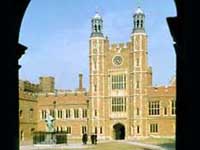
Hampton Court Palace
Situated on the banks of the Thames, 14 miles (23km) southwest of London, Hampton Court is perhaps the most spectacular royal palace in England and makes a great day-trip from London. The palace was built by Cardinal Wolsey in the early 1500s, it later became King Henry VIII's principal residence and remained the centre of royal and political life in England until 1737 where many important events took place. Visitors can see King Henry VIII's Great Hall, King William III's State Apartments, designed by Wren and completed in 1700, and the unmissable Tudor Kitchens, which remain largely unchanged since the 16th century and no doubt used to cater for raucous banquets. The palace is probably most famous for its grounds and the famous maze, which has entertained children since it was planted in 1705.
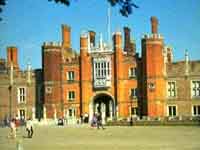
Events
Chinese New Year
The Chinese New Year is celebrated every year in London's Chinatown, which is located in Soho. As the Chinese calendar is based on lunar and solar movements, this festival takes place on a different date every year. The festival consists of numerous parades, which often snake their way through to Covent Garden. The celebrations give rise to a variety of food stalls in the area, serving Chinese cuisine, and visitors and tourists are always welcome to watch and participate. English is still the second language for many Chinese in London, so visitors should remember to wish them a happy New Year in their own language. In Cantonese it is Gueng Huei Fa Zuai, pronounced gwung-hway-fa-tzoo-eye and in Mandarin it is Gong Xi Fa Cai, pronounced gong-she-fatsai.
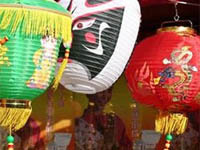
Flora London Marathon
The Flora London Marathon is a 26.2 mile (42km) race from Greenwich Park to the Mall, via Cutty Sark, Canary Wharf, the Tower of London, Buckingham Palace and Big Ben. Around 30,000 professional and amateur runners compete every year, many dressed in fancy dress to raise money for charity. The route is lined with spectators and has a very festive atmosphere.
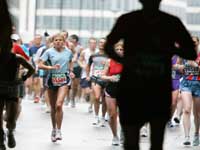
Trooping the Colour (Queen's Birthday Parade)
The ceremony of the Trooping the Colour (or Queen's Birthday Parade) takes place each year on Horse Guards Parade on the Queen's birthday and dates back to the time of Charles II in the 17th century. Although the Queen was actually born on 21 April, her official birthday is celebrated in the summer, when the weather is better. The parade begins with one of the Foot Guard regiments of the Household Division escorting their regimental colour, before giving the Queen a salute in front of Buckingham Palace, and is followed by a march of the Massed Bands before the Queen is escorted back home by the Household Cavalry Mounted Regiment on their magnificent black chargers.
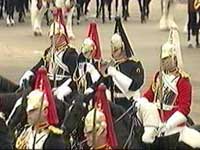
Notting Hill Carnival
The first Notting Hill Carnival took place in 1964 when London's Caribbean community introduced the carnival to ease racial tensions. Since then it has become a popular and colourful annual event celebrated by more than two million Londoners of all backgrounds. It is the world's second largest street party after the Rio Carnival held in Brazil. The carnival consists of costume parades, a steel band, jazz and reggae performances, and countless street vendors selling exotic Caribbean food. For more information contact London Notting Hill Carnival Ltd on 08700 59 1111 ( weekdays 9am to 6pm).
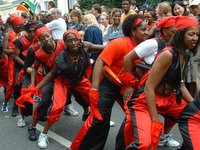
Lord Mayor's Show
The Lord Mayor's Show is an annual event held in the City of London when the Mayor makes his way from Mansion House to the Royal Courts of Justice to swear allegiance to the crown. The procession has been marked by each Lord Mayor since 1215, including Dick Whittington (famous for having a cat). Since then the journey has grown into a rich pageant ending with a magnificent fireworks display over the Thames.
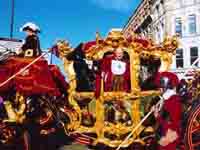
Changing the Guard
This is one of the oldest and most familiar of all royal ceremonies. Every other day a throng of tourists gather outside Buckingham Palace to watch the exchange of duty between the Old Guard and the New Guard. The Foot Guards wear their traditional uniforms, complete with bearskins, but carry modern weapons as their role is practical as well as ceremonial. The handover is accompanied by a band from one of the five Foot Guard regiments who play anything from traditional military marches to pop tunes. Guard Mounting also takes place daily at the same time at Windsor Castle and the Tower of London. The Changing of the Queens Life Guards involves the handover of duty between the two mounted regiments, the Blues and Royals and the Life Guards. When the Queen is in residence (most weekdays) it is more flamboyant as the Captain of the Guard and trumpeter lead the procession.
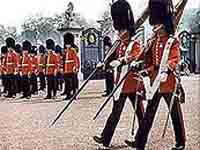
Oxford and Cambridge Boat Race
An annual tradition since 1829, the rowing race between two of Britain's oldest university sides creates a festival atmosphere along the banks of the Thames River between Putney and Mortlake. Thousands of people gather at various vantage points along the riverbank, many of them conveniently close to pubs, to watch the famous four-and-a-quarter mile race that marks the beginning of the English social season.
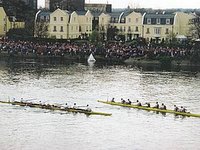
West End Shows
Famed for its musicals, the West End in the centre of London boasts some of the best theatre in the world, from musicals to comedy and drama. There are ongoing shows that have been running for years, such as Phantom of the Opera, Les Misérables, Lion King and Blood Brothers, while current shows include Fiddler on the Roof, Dirty Dancing and Cabaret.
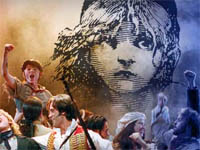
Country Living Magazine Christmas Fair
Showcasing the finest selection of Christmas gifts, fabulously-festive home decorations and a delicious range of food and drink from luxury Christmas puddings to Cornish Cheese and fine wines, the Country Living Magazine Christmas Fair is the ultimate Christmas bazaar. Thousands of visitors are expected to attend the annual fair where a multitude of products will be on offer at over 400 exhibitor stands. From local and national crafts, bespoke fashion and jewellery to handmade products including rocking chairs, kitchenware, tree swings and soaps, there are gift ideas to suit all the family. All the ingredients, and the trimmings, needed for a simply scrumptious Christmas dinner, can also be found.
Tutankhamun and the Golden Age of the Pharaohs
The 'Boy King' ascended the throne when he was about nine years old and died at the age of 18, assuming kingship at the height of the Egyptian Empire. Tutankhamun's tomb was discovered in Egypt in 1922 in the Valley of the Kings and the exhibition includes glittering objects from his tomb, including the golden crown, the royal diadem. Other treasures from ancient Egypt and the Valley of the Kings are also featured, and visitors can explore the fascinating times in which Tutankhamun lived and reigned.
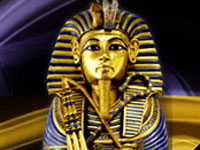
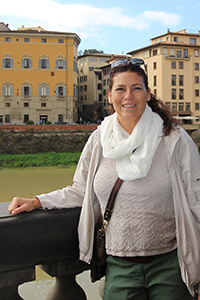
Linda Bucknam
Travel Consultant, Owner
F: 603.386.6637
23 Stack Drive
Bow, NH 03304
Monday - Friday
10:30 AM - 4:00 PM
*Weekend hours available by appointment
travLBudi is a NH-based travel agency that specializes in travel to the Caribbean, Europe, and Disney
